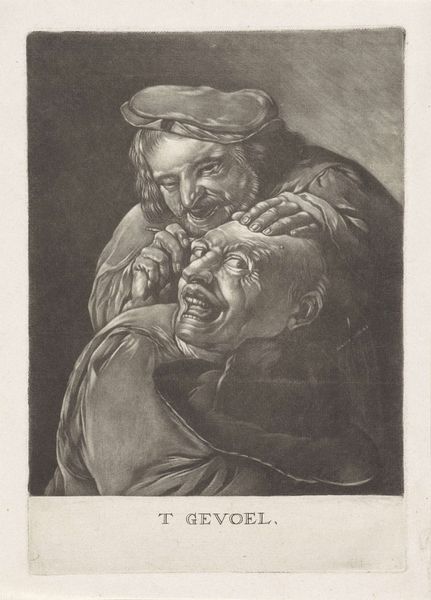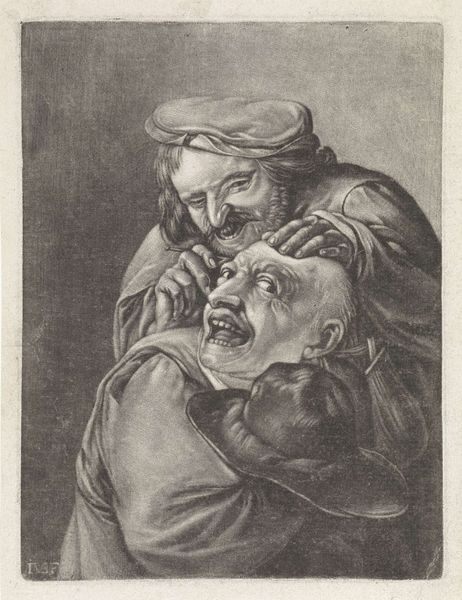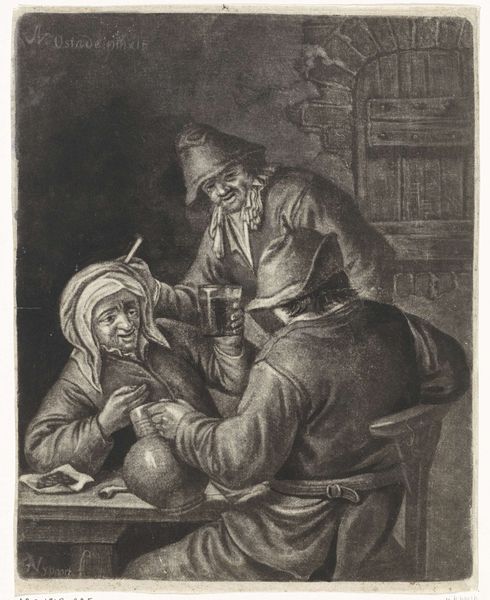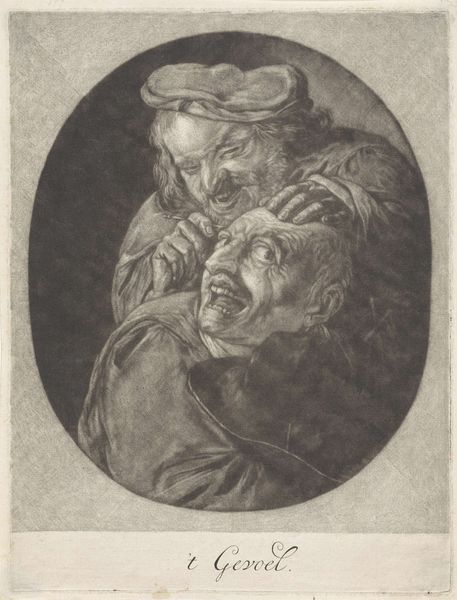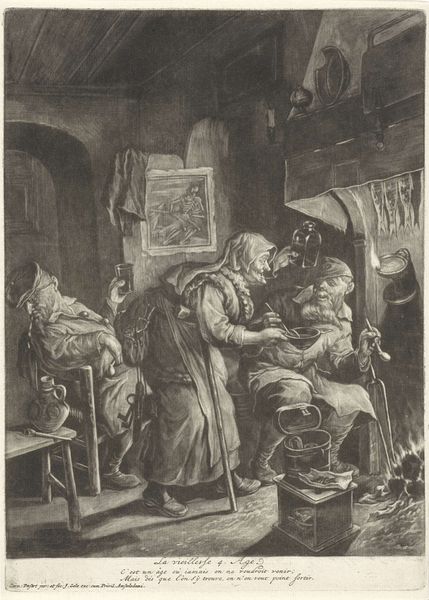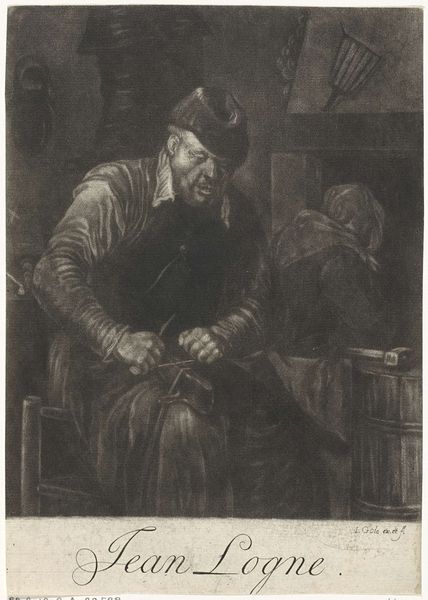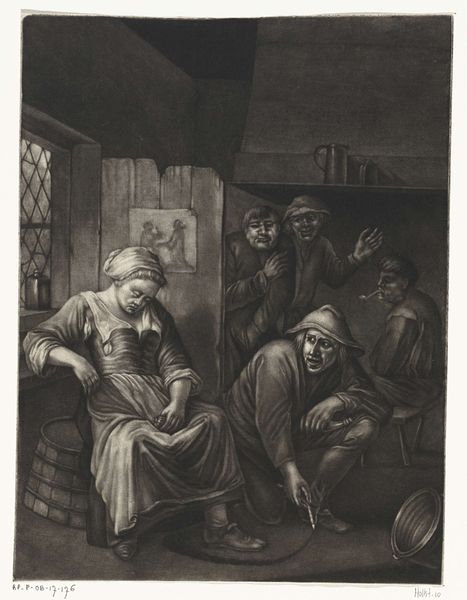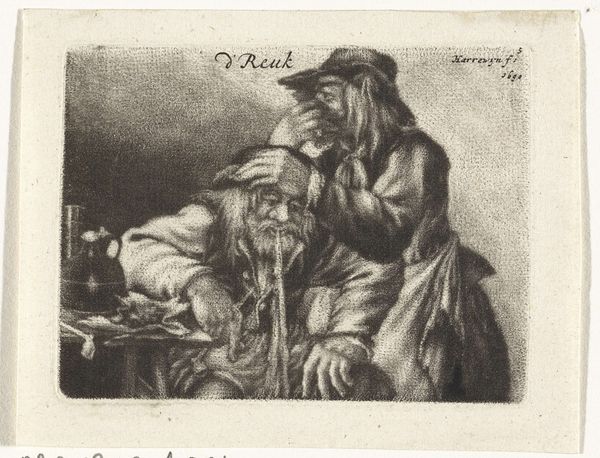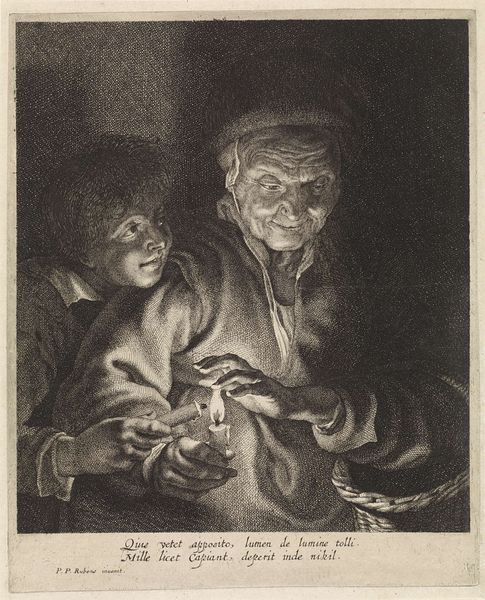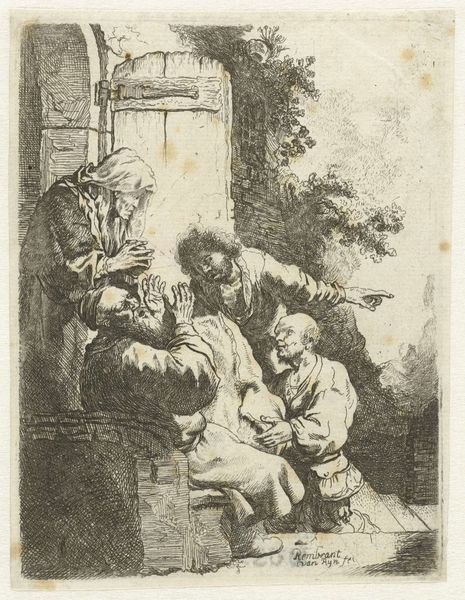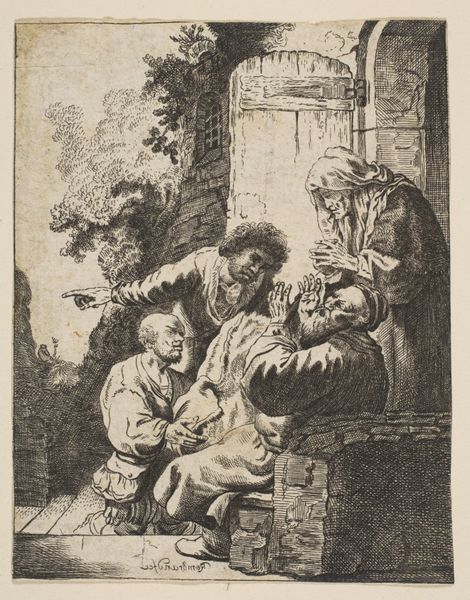
drawing, charcoal
#
portrait
#
drawing
#
baroque
#
charcoal drawing
#
charcoal art
#
portrait reference
#
pencil drawing
#
portrait drawing
#
genre-painting
#
charcoal
#
charcoal
Dimensions: height 225 mm, width 177 mm
Copyright: Rijks Museum: Open Domain
Curator: Johannes de Groot’s charcoal drawing, “Een vrouw luist een man,” or “A woman delousing a man,” from the late 17th to early 18th century, presents a rather intimate scene. The work now resides at the Rijksmuseum. Editor: My first impression is one of discomfort and tension. The sharp contrast in light and shadow gives it an almost grotesque feeling, amplifying the less glamorous side of domesticity. Curator: Indeed. Notice the artist’s masterful manipulation of charcoal to create a wide tonal range. The meticulous rendering of the figures, with particular attention to texture – the rough fabric of the clothes, the wisps of hair – lends a palpable sense of realism to the genre scene. Consider the subtle diagonals within the composition. Editor: And consider the weight of those symbols! Delousing, while a mundane task, carries deep cultural and historical connotations. It speaks to hygiene, social status, and perhaps even anxieties surrounding disease and cleanliness that were incredibly relevant in that era. The woman, almost maternal in her attentiveness, is attending to something that, left unattended, threatens society itself. Curator: Precisely. The woman’s gaze, while focused, seems to convey a detached professionalism, compared to the man's almost comical expression of… discomfort? The artist contrasts the coarse nature of their task with a fine application of medium on paper, resulting in dynamic tension between process and meaning. Editor: It’s fascinating how de Groot elevates this very ordinary, almost abject, act to something worthy of artistic consideration. It humanizes both figures but doesn’t romanticize their condition. It rather poignantly reflects on daily realities and simple survival. Curator: I find that its artistic merit lies in how efficiently it reveals the delicate balance of stark contrasts, not only in form but in everyday lives, and elevates the humble process by using the sophisticated strokes that he employs here. Editor: It leaves us contemplating not just the scene depicted, but the social context in which such a task held significant weight. The artwork transcends the individual portrayal, to hint at wider historical implications that still echo today.
Comments
No comments
Be the first to comment and join the conversation on the ultimate creative platform.
